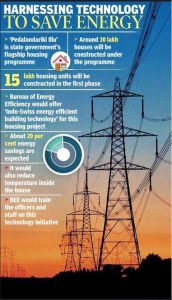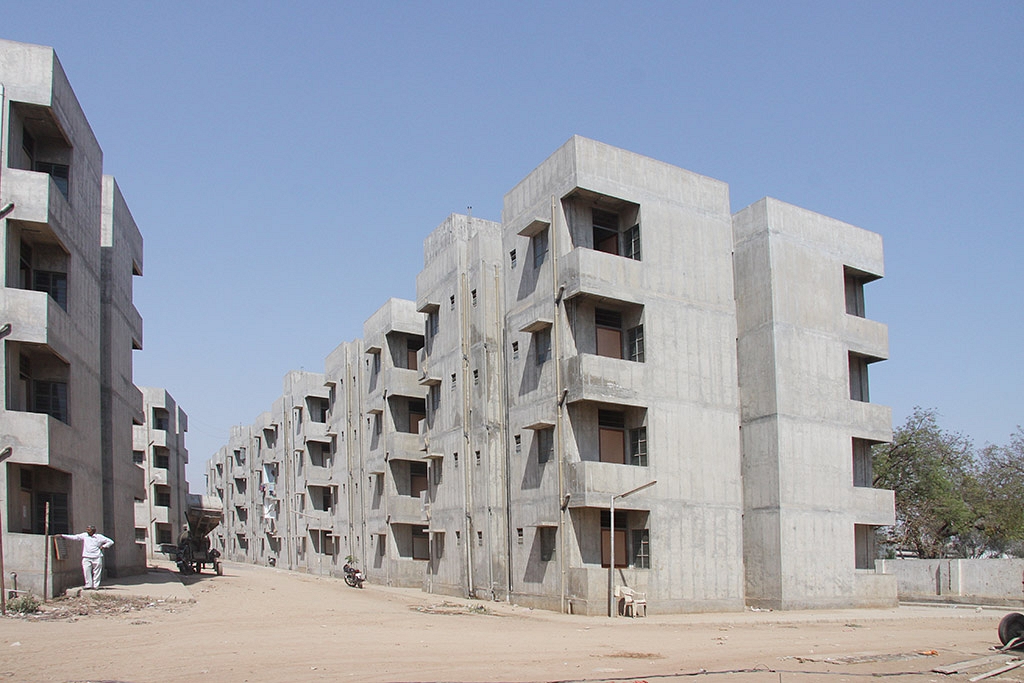Table of Content
VISAKHAPATNAM: The innovative "Indo-Swiss Energy Efficient Building Technology" would be used in Andhra Pradesh's housing scheme: Pedalandariki Illu (Housing for all the poor).
Under this initiative, 30 lakhs of affordable homes will be built in the state. According to state officials, India's Swiss EE technology would reduce the temperature by about two degrees inside houses and save about 20 percent electricity.
Under the "Building Energy Efficiency Project", the Bureau of Energy Efficiency (BEE), through the India-Swiss BEE, will provide training to engineers and employees of ward and village secretariats and housing departments. This will aid in the effective implementation of the Energy Conservation Residential Buildings Act (ECBC-R) in this affordable housing program.
Initially, 50 engineers will be trained who can impart the training by themselves to other engineers.
Housing Administration special chief Secretary Ajay Jain participated in a webinar conducted by the Swiss Indian Buildings Energy Efficiency Project (BEEP), India. Jain explained the government's overall strategy in implementing this ambitious project.
 The rate of heat transfer to the roof could be reduced by using roof insulation or reflective paint on the rooftop. Autoclaved aerated concrete blocks, cavity walls, hollow bricks, etc. It will reduce the net heat gain on the building envelope. Jain said that using appropriate window shading like blinds or rolls kept outside the windows will also lower net heat gain,” said Jain.
The construction of the first phase will cover about 15 lakh housing units. The government decided to incorporate energy-efficient and thermally comfortable designs in the houses. In this housing project, energy-efficient design strategies will be implemented, thus compliance with the Eco-Niwas Samhita 2018 (ECBC-Residencial) code under BEEP. ECBE-R will ensure adequate natural ventilation, reduced electricity consumption by at least 20%, improve thermal comfort (cooling), natural lighting, and provide a safe and healthy environment in buildings,” said Jain.
The rate of heat transfer to the roof could be reduced by using roof insulation or reflective paint on the rooftop. Autoclaved aerated concrete blocks, cavity walls, hollow bricks, etc. It will reduce the net heat gain on the building envelope. Jain said that using appropriate window shading like blinds or rolls kept outside the windows will also lower net heat gain,” said Jain.
The construction of the first phase will cover about 15 lakh housing units. The government decided to incorporate energy-efficient and thermally comfortable designs in the houses. In this housing project, energy-efficient design strategies will be implemented, thus compliance with the Eco-Niwas Samhita 2018 (ECBC-Residencial) code under BEEP. ECBE-R will ensure adequate natural ventilation, reduced electricity consumption by at least 20%, improve thermal comfort (cooling), natural lighting, and provide a safe and healthy environment in buildings,” said Jain.






